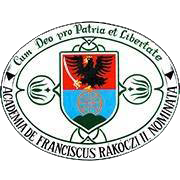Please use this identifier to cite or link to this item:
https://dspace.kmf.uz.ua/jspui/handle/123456789/3321| Title: | Transylvanian refugees and the Khust national assembly in 1706 |
| Other Titles: | Трансильванські біженці та Хустські державні збори 1706 року |
| Authors: | Csatáry György Чотарі Юрій Yurii Chotari |
| Keywords: | Ferenc Rákóczi II;national assembly;Khust;refugees;alliance;Transylvania;Hungary |
| Issue Date: | 2023 |
| Publisher: | Інститут українознавства ім. І. Крип’якевича НАН України |
| Type: | dc.type.researchArticle |
| Citation: | In Україна: культурна спадщина, національна свідомість, державність. 2023. Випуск 38. c. 96-104. |
| Series/Report no.: | ;Випуск 38. |
| Abstract: | Abstract. During the Rákóczi War of Independence, three national assemblies took place in
today’s Transcarpathia, two in Khust (Huszt) in 1706 and 1709 and one in Shalanky (Salánk)
in 1711. They played a significant role in shaping national policy. At the same time, we
should also know that only a limited number of representatives of those who were invited
participated in all three occasions. This can be explained by which side the senators were
on in the given period, the side of the emperor or the war of independence. The aim of this
study is to examine in detail the circumstances of the 1706 Khust National Assembly and the
decisions made there, as well as their significance. The central issue was the conclusion of
the federal agreement between the two countries, Transylvania and Hungary, which ensured
a wider international scope for the leaders of the war of independence. It is true that the
representatives of the Transylvanian orders were not fully present at this national assembly,
as the pro-imperial Transylvanian nobility stayed away, but this did not affect the legality
of the decisions. Important deliberations were held and decisions were made about the accommodation
and care of the nobility fleeing Transylvania to Hungary and their servants. The flood of
refugees mainly affected the area of today’s Transcarpathia, where the pro-Rákóczi nobility
who moved out of Transylvania settled down or moved on. At first, the leadership of the
counties viewed the refugees with understanding, but years later conflicts arose from the
forced coexistence, which are richly reported in the documents of the counties of Uzh (Ung)
and Uhocha (Ugocsa), which can still be found today in the Transcarpathian State Archives.
It is stated that Khust National Assembly demonstrated the high degree of alliance
between Hungary and Transylvania, the importance of which they wanted to use in
negotiations with the imperial court. It is known, however, that these peace negotiations did
not lead to success, but the federal system of the two countries survived even later. Резюме. Встановлено, що під час визвольної війни під проводом Ференца Ракоці ІІ на території сучасного Закарпаття тричі відбувалися державні збори: два – в Хусті (1706, 1709) і один – у Шаланках (1711), які відіграли значну роль у формуванні національної політики. Водночас зазначено, що в усіх трьох заходах брала участь лише обмежена кількість представників тих, хто був запрошений. Це пояснено тим, на чийому боці були сенатори в той період: імператора чи війни за незалежність. Метою цього дослідження визначено детальний розгляд обставини Хустського державного збору 1706 р. і прийняті на ньому рішення, а також їхнє значення. Наголошено, що центральним питанням було укладення федеративної угоди між двома країнами – Трансильванією та Угорщиною, яка забезпечила лідерам війни за незалежність ширший міжнародний простір. Щоправда, зазначено, що представники трансильванської шляхти були присутні на цих зборах не вповні, оскільки проімперська трансильванська шляхта залишилася осторонь, але це не вплинуло на законність рішень. Окремо акцентовано увагу на тому, що було проведено важливі обговорення та прийнято рішення про розміщення шляхти й опіку над нею, адже вона втікала із Трансильванії до Угорщини, та її слугами. Встановлено, що потік біженців здебільша заторкнув територію сучасного Закарпаття, де оселилася або куди переселилася шляхта – прихильники Ракоці, – які виїхали з Трансильванії. Спостережено, що спочатку керівництво комітатів ставилося до біженців із розумінням, але за декілька років виникли конфлікти через вимушене співіснування, про що свідчать документи Ужанського й Угочанського комітатів, які й сьогодні зберігаються в Закарпатському державному архіві. Встановлено, що хустські державні збори продемонстрували високий ступінь союзу між Угорщиною та Трансильванією, значенням якого вони хотіли скористатися у переговорах з імперським двором. Однак констатовано, що ці мирні переговори не привели до успіху, але федеративний устрій двох країн зберігся до кінця визвольної війни. |
| URI: | https://dspace.kmf.uz.ua/jspui/handle/123456789/3321 |
| ISSN: | 2223-1196 |
| metadata.dc.rights.uri: | http://creativecommons.org/licenses/by-nc-nd/3.0/us/ |
| Appears in Collections: | Csatáry György |
Files in This Item:
| File | Description | Size | Format | |
|---|---|---|---|---|
| Csatary_Gy_Transylvanian_refugees_and_the_Khust_national_assembly_in_1706_2023.pdf | In Україна: культурна спадщина, національна свідомість, державність. 2023. Випуск 38. c. 96-104. | 300.46 kB | Adobe PDF | View/Open |
This item is licensed under a Creative Commons License





